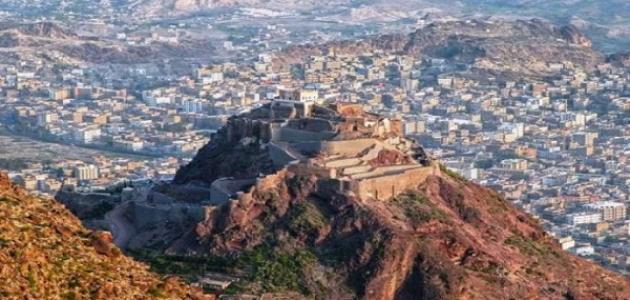Taizz

Taizz City
The city of Taizz is one of the yemeni cities located on the mountain heights, specifically at the foot of Jabal Sabra, estimated to be about 3,000 meters high, and is about 256 kilometers away from the Yemeni capital, and is characterized by one of the largest provinces of Yemen, in addition to being the main center of the province, and ranked third in Yemen in terms of population, and characterized by the availability of fruits, flowers and rivers distinguished in it, so described as Damascus Yemen.
Climate
Taizz has been divided into three directorates, characterized by a moderate climate throughout the year, compared to other Yemeni cities, and is considered one of the cities where heavy rains fall after Ibb, with an estimated rainfall rate of about 600 mm.
The importance of Taizz
This city is of great importance to other cities, and its importance lies in the fact that it is the cultural capital of Yemen, because of the great role it played in the history of Yemen in all its stages, ancient, Islamic and modern, and increased its importance when it was the official capital of the Rasulid dynasty, which was between the years 1200 and 29 a.m. and the year 1444 and 54 AD, where it was able to fully extend all control over Yemen.
The history of this city began when the Sultan of the Salhia State built a castle called Cairo Castle, which was in the middle of the 6th century AH, and initially extended it under his brother Ali bin Mohammed al-Salhi, and this Yemeni city is considered one of the cities created in the Islamic phase, as a goat with a hand and a mountain, in addition to being the main military center, and this was before leaving to live in zubaydah Turan Shah, After being subjected to Yemen, in 1975, Taiz Castle or Cairo Castle is the first nucleus of Taizz, as well as The Adine, located on the south-west side, and the south-west side.
The establishment of the Rasulid dynasty
When the Ayyubid came out of Yemen, Omar ibn Rasul established the Rasulid dynasty, where Taizz remained its official capital, after which Bani Tahir was inherited from all areas of influence of the Rasulid dynasty, with Taizz as its capital, and Imam Zaidi al-Mutawakkil Yahya Sharafuddin Taizz was overthrown, in the year 1,557 AD, in cooperation with the Mamluks.
After the Ottomans withdrew from Taizz, this city was transformed into the main capital of the Yemeni Queen, where Ahmed bin Yahya al-Thalaya staged a coup against Imam Ahmed Hamid al-Din, which occurred in the year 1955 AD, and his palace was besieged for ten consecutive days, from which the Revolution of December 26th.